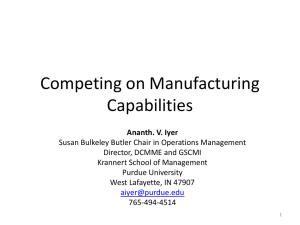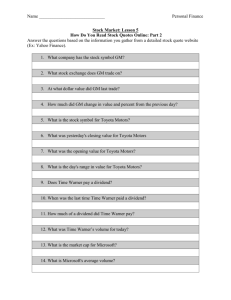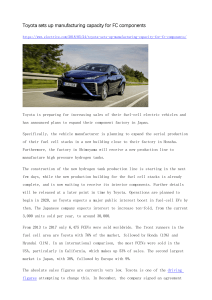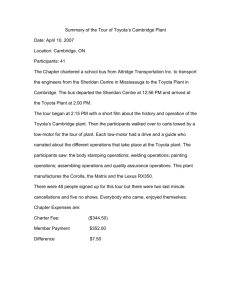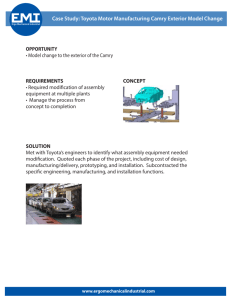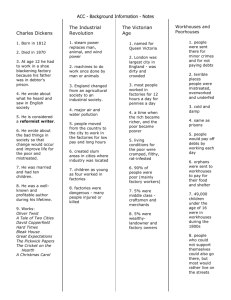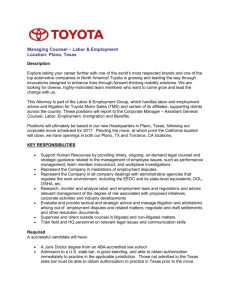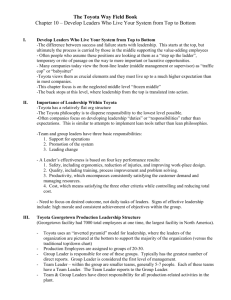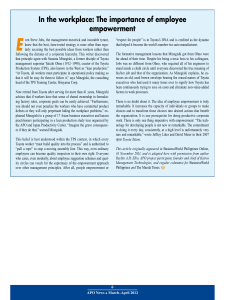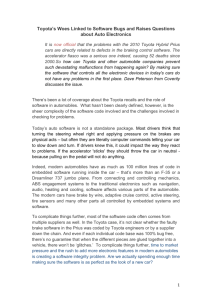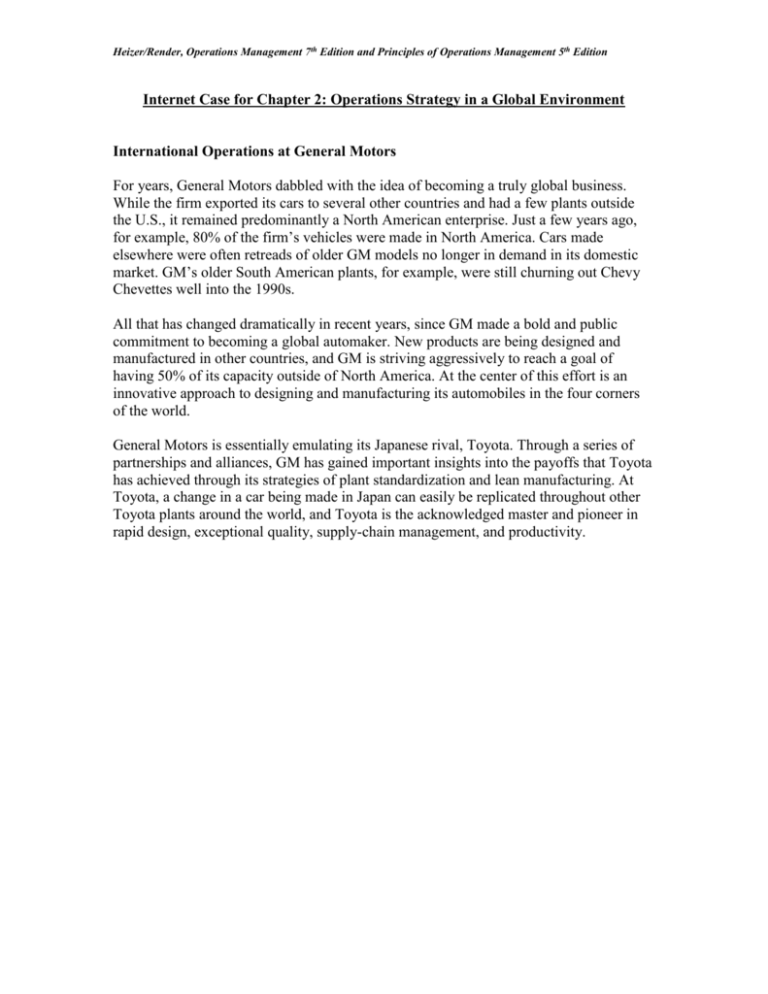
Heizer/Render, Operations Management 7th Edition and Principles of Operations Management 5th Edition
Internet Case for Chapter 2: Operations Strategy in a Global Environment
International Operations at General Motors
For years, General Motors dabbled with the idea of becoming a truly global business.
While the firm exported its cars to several other countries and had a few plants outside
the U.S., it remained predominantly a North American enterprise. Just a few years ago,
for example, 80% of the firm’s vehicles were made in North America. Cars made
elsewhere were often retreads of older GM models no longer in demand in its domestic
market. GM’s older South American plants, for example, were still churning out Chevy
Chevettes well into the 1990s.
All that has changed dramatically in recent years, since GM made a bold and public
commitment to becoming a global automaker. New products are being designed and
manufactured in other countries, and GM is striving aggressively to reach a goal of
having 50% of its capacity outside of North America. At the center of this effort is an
innovative approach to designing and manufacturing its automobiles in the four corners
of the world.
General Motors is essentially emulating its Japanese rival, Toyota. Through a series of
partnerships and alliances, GM has gained important insights into the payoffs that Toyota
has achieved through its strategies of plant standardization and lean manufacturing. At
Toyota, a change in a car being made in Japan can easily be replicated throughout other
Toyota plants around the world, and Toyota is the acknowledged master and pioneer in
rapid design, exceptional quality, supply-chain management, and productivity.
Heizer/Render, Operations Management 7th Edition and Principles of Operations Management 5th Edition
In contrast, U.S. automakers have traditionally designed each automobile factory as a
unique and autonomous facility. While this sometimes makes a given plant especially
productive—because it was designed for one specific purpose—it also constrains
flexibility and makes it more difficult to transfer new technologies and methods between
factories.
GM is now using Toyota’s strategy in its newest factories, located in Argentina, Poland,
and China. (Completion of a fourth plant in Thailand has been postponed because of the
Asian currency crisis.) The plants look so much alike that a visiting GM executive might
forget which country she or he is in. This strategy allows GM to launch global products,
such as a new “world car,” more easily. Equally as important, if one factory develops a
glitch or problem, it might easily be solved by simply calling one of the others. Similarly,
if a manager at one factory discovers a new way of achieving a productivity gain, this
information can be easily passed on and implemented in the other factories.
GM’s new factories have been designed with flexibility and efficiency in mind. Each
factory can be easily expanded should demand warrant higher production. Each is
constructed in a large U shape so that suppliers can deliver component parts and
accessories directly to the assembly lines, cutting down on warehouse costs and
improving productivity.
But while the plants are as similar to one another as possible, GM also found it necessary
to make adjustments in each to meet unique conditions in each country. In China, for
example, managing the plant’s just-in-time inventory system will present unique
challenges, for suppliers will be delivering many parts on carts and bicycles due to that
country’s poor road system. Despite such minor accommodations to local conditions, GM
nonetheless believes that its standardized plants will cut its production costs substantially
and allow it to succeed in the world’s emerging markets.
DISCUSSION QUESTIONS
1. What are the advantages and disadvantages of General Motors’ strategy for
operations?
2. In which businesses is this strategy appropriate, and in which businesses might it be
less appropriate?
3. What operations management decisions are illustrated in this case?
Source: R. W. Griffin and M. W. Pustay, International Business:
A Managerial Perspective, Second Edition, (pages 647/648) © 1999, 1996 Addison Wesley Longman.
Reproduced by permission of Addison Wesley Longman. All rights reserved.



